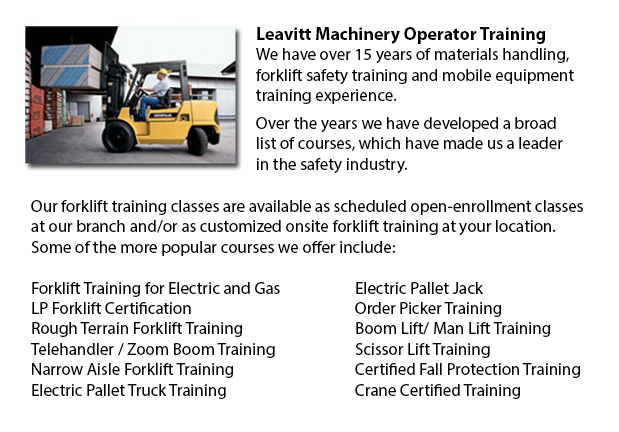
Rough Terrain Forklifts Training Regina - There are actually two unique classifications of forklifts within the material handling market, the industrial model and the rough terrain model. Rough terrain lift trucks initially arrived on the market in the 1940's and were primarily used on uneven roads, best for areas where no paved roads were existing, like construction sites and lumberyards.
Usually, the majority of rough terrain lift trucks are run on a propane, diesel or gasoline powered internal combustion engines with a battery used for power. Many suppliers are playing with rough land lift trucks that consume vegetable matter and run from ethanol. Substantial pneumatic tires with deep treads typify these forklifts to permit them to clutch onto the roughest ground type without any misstep or sliding.
Some of the original designs of rough ground lift trucks had the ability to haul in excess of 1000 lbs, via forks that could pass beneath the item, jack it marginally and move it to another site. After more than ten years on the market, all terrain lift trucks were enhanced with added hauling muscle, increasing the possible load to more than 2000 lbs. Telescoping booms were added in the 1960's, enabling them to stack resources a great deal higher than in preceding years. The telescoping model feature is a staple of nearly all all terrain lift trucks these days. Present models are capable of managing well over 4000 lbs due to the continuous improvements over the years. Telescoping ability has also improved with some versions attaining a height of 35 feet. Operator safety has also become a focus with several all terrain forklifts now manufactured are equipped with an enclosed cab for the driver, as opposed to the older open air seating capacity.
The rough terrain lift trucks accessible today work just as well on covered floors as on unpaved roads. These all terrain lift trucks are being marketed for their adaptability allowing establishments to move components from outside the facility to the inside or vice versa.
-
Boom Trucks
Boom Trucks Training Regina - Boom truck are often utilized by phone, cable television and utilities organizations as they have extended folded arms which are commonly folded over the roofs of company vehicles. On the end of the extension of extendab... More -
Pneumatic Forklifts
Pneumatic Forklifts Training Regina - Pneumatic jacks are known as pallet vehicles or pump trucks and are broadly utilized in warehouses and delivery plants to transfer resources on pallets. Pneumatic lift trucks include a pair of metallic forks moun... More -
JLG Telehandler
JLG Telehandler Training Regina - In the late 1960's John L. Grove, with his wife Cora embarked on on a cross country trip in their RV. Newly retired, after spending several years working with his brother to assemble their crane business into an mark... More -
Scissor Lifts
Scissor Lift Training Regina - The scissor lift or table lift, is an automated industrial lift that has been adapted to be utilized in retail, wholesale, manufacturing and production settings. Mechanized scissor lifts have been used chiefly within pr... More -
Crown Forklift
More

Forklift Training Regina
TOLL FREE: 1-888-254-6157
Regina, Saskatchewan
forklifttrainingregina.com
Email Us
About Us


